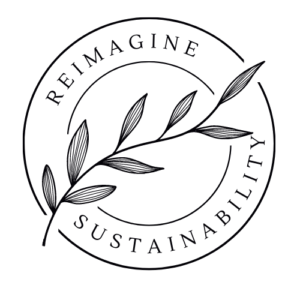With the sheer amount of crises and challenges, it becomes increasingly difficult to know where to start your sustainability project or whether to start at all. The complexity of our systems doesn’t make it easy to find the right solutions. Interestingly, sustainability problems derive from one or more failures in a system, but this is not a widely communicated issue.
To tackle sustainability problems, we must first explore the underlying system and not focus on the symptoms. But why? Why can’t we simply remove carbon (symptom) from the atmosphere and everything will go back to normal? Unfortunately, it’s not that easy. Our ancestors removed and we continue to remove the parts which enable the Earth’s systems to keep emissions at a healthy level.

Differences in Linear and Systems Thinking
Just like the climate crisis, other human crises (like biodiversity loss, food system failure, housing crisis, mental health decline etc.) derive from failing systems, which don’t benefit the well-being of societies and nature. The problem is that humans tend to create linear systems although life is inherently complex and sustained through circular and interconnected systems.
Sustainability cannot exist without circular systems. Thus to achieve our worldwide sustainability goals, we need to understand systems as a whole to develop solutions which fit. Not the other way around. How are we going to do this? I will explain more later in this article, but first let’s move on to understand what a system is exactly.
What is a helpful definition for defining a system?
A system consists of multiple highly integrated parts or subparts. The collection of those parts is organised in a way to fulfil a specific purpose. Systems usually exist to achieve one or more goals.
The dictionary defines systems as a set of things which are working together as parts of a mechanism or an interconnecting network. In other words, systems can be a set of principles or procedures to achieve something. Synonyms for a system are structure, organisation, order, arrangement, complexity and network.
An easy example of a well-functioning system is a bike. All parts are needed for the bike to be fully usable and enjoyable. Sometimes, if one part is broken or malfunctions, the whole bike system suffers and impacts our user experience.

Well-functioning systems depend on every part
You can see systems as an organised relationship among different functioning components. If one part doesn’t, or can’t do its job, or disappears, the system needs to restructure to reach its goal. Understanding the basics of systems is fundamental to tackling our pressing challenges.
We depend on well-functioning systems
In fact, not understanding systems is a big problem. Humans destroyed so much of the natural environment that it can’t function properly anymore. Consequently, we’re experiencing the result of natural system malfunction and an accelerating climate crisis in the form of extreme weather events, like floods, fires and droughts. What we are now experiencing all over the world are the consequences of very bad decision-making.
Similarly, the wage pay gap is a good example of a broken societal structure system. It is a broken system as there is no opportunity for people to thrive, because they can only focus on surviving.
There are two approaches to understanding systems better and contributing to more effective system change. First, let’s have a look at the three basic concepts of a system. Afterwards, I will introduce you to five characteristics and you will be well-equipped for the next step in your journey: systems thinking.
The basic concepts of systems
Before we get into the juicy principles of systems, I want to recap what a system is. You might have sensed that this is an important topic to me. If you asked me “what is the most important thing for Sustainability?”, I would promptly answer !Systems Thinking! No, it’s not the end of the article, but here is a little summary about defining systems:
- Systems are designed to complete a specific purpose. It is important to remember that every system has predetermined objectives.
- Parts and subparts in a system are interconnected and depend on each other. Important words to remember are interdependence and interrelationship.
- The organisation of system parts within a system are crucial for it to reveal its potential. Again, if there is a natural balance within the system, the system can achieve its goal. It’s all about the goal.
Another important note I want to add is about interdependence. If one part disappears or doesn’t function anymore, the system won’t necessarily be brought out of balance. Natural systems have the incredible capacity to deal with external shocks. You might know this phenomenon under the term resilience. The challenges emerge when a whole system vanishes or many parts disappear so that the system cannot fulfil its purpose anymore.
Five important types of systems characteristics
Now that you have the basics, we can go more into detail about how systems are structured and function: organisation, interaction, interdependency, integration and objective.
A system is typically characterised by…
… an organisational structure. Structure and order evolved in different systems. This can be applied to both nature or technology or social structures. The organisation of the elements in a system determines whether its goals can be easily achieved or not.
For example, in a job, everyone has a role and tasks they need to fulfil to achieve an overarching goal. The term hierarchical system is used in a company where everyone contributes to achieving a specific goal(s). If someone or something is missing, the systems/team needs to be restructured to fill the gap.
… the interaction of parts with each other. This is about the way all parts of a system function together. It’s important to understand how each part relates to every other part.
Continuing with the company example, if everyone knows the role and tasks of their colleagues, you have a better understanding of how to work together effectively. Interrelationships with your colleagues often determine the success of a business. Does everyone have a clear role? Does everyone know what the others are doing?
… the interdependency between every part. Each part depends on another part to fulfil its duty. The functionality of a part is central, like a watch which can only work if each piece fulfils its duty. The output of one part is required for another part to function.
In the workspace, we depend on others to do their job so that we can do ours well. We depend on the work of our colleagues for our bureau system to work effectively
.
So we covered organisation, interaction and interdependence. Two more to go…
… the integration of system parts. The integration of a system describes how it is tied together. It’s about the physical parts or location. It refers to how every component performs an important role within the system and how its functionality is closely tied to other parts for it to perform well.
For example, the quality of your work can either enhance or hinder the performance of another colleague. You and your colleague’s contributions are equally responsible to achieve the common goal
… a central objective or goal. A system always has a central goal. In the natural world, it maintains a balance for life to thrive. In the business world, it might be to reach a revenue target, increase performance, or contribute to greater sustainable outcomes and influence.
I prepared a little task for you to apply the systems concept
Applying a system’s concept is one of the more difficult tasks when it comes to making sustainable decisions. Systems can be very complex and entangled because no one has previously put in the effort to create traceable systems right from the start.
I love thinking in systems and bringing different perspectives into my thinking. Consequently, the task I have for you is to train your ability to think outside the box. Choose one part of your life which doesn’t work so well at the moment. You can use your workplace, sports club, family gatherings, hobbies etc. Then start thinking about what elements are involved in making this system work
.
You have multiple options:
- Draw your chosen system
- Make notes about your chosen system
- Photograph your chosen system
- Tinker with your chosen system
The important part is to identify as many elements as you can. Hopefully, you will achieve Wow-moments like me. I’m very curious, and if you want to share your outcomes with me, it would make my day! Simply write an email to me: either go to my contact page or write directly to info@reimaginesustainability.com



I haven’t thought much about systems thinking but have often been told things are “systematic.” I learned from this post more about the system concept and thank you for creating a way to understand it!
Thank you Nia! I’m glad that I could make it easier to understand the complexity of systems